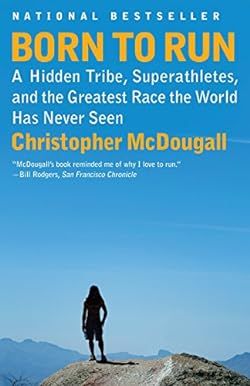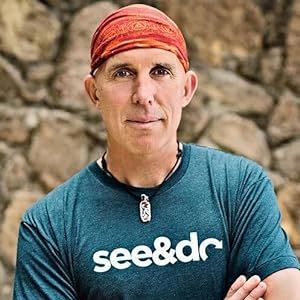Born to Run: A Hidden Tribe, Superathletes, and the Greatest Race the World Has Never Seen
4.7
-
24,827 ratings
NATIONAL BESTSELLER • The astonishing and hugely entertaining story that completely changed the way we run. An epic adventure that began with one simple question: Why does my foot hurt?
“Equal parts quest, physiology treatise, and running history.... The climactic race reads like a sprint.... It simply makes you want to run.” —Outside Magazine
Isolated by Mexico's deadly Copper Canyons, the blissful Tarahumara Indians have honed the ability to run hundreds of miles without rest or injury. In a riveting narrative, award-winning journalist and often-injured runner Christopher McDougall sets out to discover their secrets. In the process, he takes his readers from science labs at Harvard to the sun-baked valleys and freezing peaks across North America, where ever-growing numbers of ultra-runners are pushing their bodies to the limit, and, finally, to a climactic race in the Copper Canyons that pits America’s best ultra-runners against the tribe. McDougall’s incredible story will not only engage your mind but inspire your body when you realize that you, indeed all of us, were born to run.
Look for Born to Run 2, out now!
Kindle
$11.99
Available instantly
Audiobook
$0.00
with membership trial
Hardcover
$18.77
Paperback
$9.99
Ships from
Amazon.com
Payment
Secure transaction
ISBN-10
0307279189
ISBN-13
978-0307279187
Print length
304 pages
Language
English
Publisher
Vintage
Publication date
March 28, 2011
Dimensions
8.5 x 5.43 x 0.3 inches
Item weight
3.87 ounces
Popular Highlights in this book
Beyond the very extreme of fatigue and distress, we may find amounts of ease and power we never dreamed ourselves to own; sources of strength never taxed at all because we never push through the obstruction.
Highlighted by 10,071 Kindle readers
You don’t stop running because you get old,” said the Demon. “You get old because you stop running.
Highlighted by 4,935 Kindle readers
“Let us live so that when we come to die, even the undertaker will be sorry,” Mark Twain used to say.
Highlighted by 3,616 Kindle readers
Product details
ASIN :
B0028MBKVG
File size :
7906 KB
Text-to-speech :
Enabled
Screen reader :
Supported
Enhanced typesetting :
Enabled
X-Ray :
Enabled
Word wise :
Enabled
Editorial Reviews
"A tale so mind-blowing as to be the stuff of legend." —The Denver Post
"McDougall's book reminded me of why I love to run." —Bill Rodgers, San Francisco Chronicle
"Fascinating. . . . Thrilling. . . . An operatic ode to the joys of running." —The Washington Post
“It�’s a great book. . . . A really gripping read. . . .Unbelievable story . . . a really phenomenal book.” —Jon Stewart on The Daily Show
"One of the most entertaining running books ever." —Amby Burfoot, Runnersworld.com
“Equal parts quest, physiology treatise, and running history. . . . [McDougall] seeks to learn the secrets of the Tarahumara the old-fashioned way: He tracks them down. . . . The climactic race reads like a sprint. . . . It simply makes you want to run.” —Outside Magazine
“McDougall recounts his quest to understand near superhuman ultra-runners with adrenaline pumped writing, humor and a distinct voice...he never lets go from his impassioned mantra that humans were born to run.” —NPR
“Born to Run is a fascinating and inspiring true adventure story, based on humans pushing themselves to the limits. It’s destined to become a classic.”–Sir Ranulph Fiennes, author of Mad, Bad and Dangerous To Know
“Equal parts hilarity, explanation and earnestness—whisks the reader along on a compelling dash to the end, and along the way captures the sheer joy that a brisk run brings.” —Science News
“Born to Run is funny, insightful, captivating, and a great and beautiful discovery.” —Lynne Cox, author of Swimming to Antarctica
“A page-turner, taking the reader on an epic journey in search of the world’s greatest distance runners in an effort to uncover the secrets of their endurance.” —The Durango Herald
“Driven by an intense yet subtle curiosity, Christopher McDougall gamely treads across the continent to pierce the soul and science of long-distance running.”—Hampton Sides, author of Blood and Thunder and Ghost Soldiers
Sample
To live with ghosts requires solitude. —Anne Michaels, Fugitive Pieces
FOR DAYS, I’d been searching Mexico’s Sierra Madre for the phantom known as Caballo Blanco—the White Horse. I’d finally arrived at the end of the trail, in the last place I expected to find him—not deep in the wilderness he was said to haunt, but in the dim lobby of an old hotel on the edge of a dusty desert town. “Sí, El Caballo está,” the desk clerk said, nodding. Yes, the Horse is here.
“For real?” After hearing that I’d just missed him so many times, in so many bizarre locations, I’d begun to suspect that Caballo Blanco was nothing more than a fairy tale, a local Loch Ness mons - truo dreamed up to spook the kids and fool gullible gringos.
“He’s always back by five,” the clerk added. “It’s like a ritual.” I didn’t know whether to hug her in relief or high- five her in triumph. I checked my watch. That meant I’d actually lay eyes on the ghost in less than . . . hang on.
“But it’s already after six.”
The clerk shrugged. “Maybe he’s gone away.”
I sagged into an ancient sofa. I was filthy, famished, and defeated. I was exhausted, and so were my leads.
Some said Caballo Blanco was a fugitive; others heard he was a boxer who’d run off to punish himself after beating a man to death in the ring. No one knew his name, or age, or where he was from. He was like some Old West gunslinger whose only traces were tall tales and a whiff of cigarillo smoke. Descriptions and sightings were all over the map; villagers who lived impossible distances apart swore they’d seen him traveling on foot on the same day, and described him on a scale that swung wildly from “funny and simpático” to “freaky and gigantic.”
But in all versions of the Caballo Blanco legend, certain basic details were always the same: He’d come to Mexico years ago and trekked deep into the wild, impenetrable Barrancas del Cobre—the Copper Canyons—to live among the Tarahumara, a near- mythical tribe of Stone Age superathletes. The Tarahumara (pronounced Spanish- style by swallowing the “h”: Tara- oo- mara) may be the healthiest and most serene people on earth, and the greatest runners of all time.
When it comes to ultradistances, nothing can beat a Tarahumara runner—not a racehorse, not a cheetah, not an Olympic marathoner.
Very few outsiders have ever seen the Tarahumara in action, but amazing stories of their superhuman toughness and tranquillity have drifted out of the canyons for centuries. One explorer swore he saw a Tarahumara catch a deer with his bare hands, chasing the bounding animal until it finally dropped dead from exhaustion, “its hoofs falling off.” Another adventurer spent ten hours climbing up and over a Copper Canyon mountain by mule; a Tarahumara runner made the same trip in ninety minutes.
“Try this,” a Tarahumara woman once told an exhausted explorer who’d collapsed at the base of a mountain. She handed him a gourd full of a murky liquid. He swallowed a few gulps, and was amazed to feel new energy pulsing in his veins. He got to his feet and scaled the peak like an overcaffeinated Sherpa. The Tarahumara, the explorer would later report, also guarded the recipe to a special energy food that leaves them trim, powerful, and unstoppable: a few mouthfuls packed enough nutritional punch to let them run all day without rest.
But whatever secrets the Tarahumara are hiding, they’ve hidden them well. To this day, the Tarahumara live in the side of cliffs higher than a hawk’s nest in a land few have ever seen. The Barrancas are a lost world in the most remote wilderness in North America, a sort of a shorebound Bermuda Triangle known for swallowing the misfits and desperadoes who stray inside. Lots of bad things can happen down there, and probably will; survive the man- eating jaguars, deadly snakes, and blistering heat, and you’ve still got to deal with “canyon fever,” a potentially fatal freak- out brought on by the Barrancas’ desolate eeriness. The deeper you penetrate into the Barrancas, the more it feels like a crypt sliding shut around you. The walls tighten, shadows spread, phantom echoes whisper; every route out seems to end in sheer rock. Lost prospectors would be gripped by such madness and despair, they’d slash their own throats or hurl themselves off cliffs. Little surprise that few strangers have ever seen the Tarahumara’s homeland—let alone the Tarahumara.
But somehow the White Horse had made his way to the depths of the Barrancas. And there, it’s said, he was adopted by the Tarahumara as a friend and kindred spirit; a ghost among ghosts. He’d certainly mastered two Tarahumara skills—invisibility and extraordinary endurance—because even though he was spotted all over the canyons, no one seemed to know where he lived or when he might appear next. If anyone could translate the ancient secrets of the Tarahumara, I was told, it was this lone wanderer of the High Sierras.
I’d become so obsessed with finding Caballo Blanco that as I dozed on the hotel sofa, I could even imagine the sound of his voice.
“Probably like Yogi Bear ordering burritos at Taco Bell,” I mused. A guy like that, a wanderer who’d go anywhere but fit in nowhere, must live inside his own head and rarely hear his own voice. He’d make weird jokes and crack himself up. He’d have a booming laugh and atrocious Spanish. He’d be loud and chatty and . . . and . . .
Wait. I was hearing him. My eyes popped open to see a dusty cadaver in a tattered straw hat bantering with the desk clerk. Trail dust streaked his gaunt face like fading war paint, and the shocks of sun- bleached hair sticking out from under the hat could have been trimmed with a hunting knife. He looked like a castaway on a desert island, even to the way he seemed hungry for conversation with the bored clerk.
“Caballo?” I croaked.
The cadaver turned, smiling, and I felt like an idiot. He didn’t look wary; he looked confused, as any tourist would when confronted by a deranged man on a sofa suddenly hollering “Horse!”
This wasn’t Caballo. There was no Caballo. The whole thing was a hoax, and I’d fallen for it.
Then the cadaver spoke. “You know me?”
“Man!” I exploded, scrambling to my feet. “Am I glad to see you!”
The smile vanished. The cadaver’s eyes darted toward the door, making it clear that in another second, he would as well.
It all began with a simple question that no one in the world could answer.
That five-word puzzle led me to a photo of a very fast man in a very short skirt, and from there it only got stranger. Soon, I was dealing with a murder, drug guerrillas and a one-armed man with a cream-cheese cup strapped to his head. I met a beautiful, blonde forest ranger who slipped out of her clothes and found salvation by running naked in the Idaho forests, and ayoung surf babe in pigtails who ran straight toward her death in the desert. A talented young runner would die. Two others would barely escape with their lives.
I kept looking, and stumbled across the Barefoot Batman ... Naked Guy … Kalahari Bushmen ... the Toenail Amputee... a cult devoted to distance running and sex parties ... the Wild Man of the Blue Ridge Mountains ... and ultimately, the ancient tribe of the Tarahumara and their shadowy disciple, Caballo Blanco.
In the end, I got my answer, but only after I found myself in the middle of the greatest race the world would never see: the Ultimate Fighting Competition of footraces, an underground showdown pitting some of the best ultra-distance runners of our time against the best ultrarunners of all time, in a 50-mile race on hidden trails only Tarahumara feet had ever touched. I’d be startled to discover that the ancient saying of the Tao Te Ching — “The best runner leaves no trace” — wasn’t some gossamer koan, but real, concrete, how-to, training advice.
And all because in January, 2001, I asked my doctor this:
“How come my foot hurts?”
I’d gone to see one of the top sports-medicine specialists in the country because an invisible ice-pick was driving straight up through the sole of my foot. The week before, I’d been out for an easy, three-mile jog on a snowy farm road when I suddenly whinnied in pain, grabbing my right foot and screaming curses as I toppled over in the snow. When I got a grip on myself, I checked to see how badly I was bleeding. I must have impaled my foot on a sharp rock, I figured, or an old nail wedged in the ice. But there wasn’t a drop of blood, or even a hole in my shoe.
“Running is your problem,” Dr. Joe Torg confirmed when I limped into his Philadelphia examining room a few days later. He should know; Dr. Torg had not only helped create the entire field of sports medicine, but he also co-authored The Running Athlete, the definitive radiographic analysis of every conceivable running injury. He ran me through an X-Ray and watched me hobble around, then determined I’d aggravated my cuboid, a cluster of bones parallel to the arch which I hadn’t even known existed until it re-engineered itself into an internal Taser.
“But I’m barely running at all,” I said. “I’m doing, like, two or three miles every other day. And not even on asphalt. Mostly dirt roads.”
Didn’t matter. “The human body is not designed for that kind of abuse,” Dr. Torg replied.
But why? Antelope don’t get shin splints. Wolves don’t ice-pack their knees. I doubt that 80% of all wild mustangs are annually disabled with impact injuries. It reminded me of a proverb attributed to Roger Bannister, who, while simultaneously studying medicine, working as a clinical researcher and minting pithy parables, became the first man to break the 4-minute mile: "Every morning in Africa, a gazelle wakes up,” Bannister said. “It knows it must outrun the fastest lion or it will be killed. Every morning in Africa, a lion wakes up. It knows it must run faster than the slowest gazelle, or it will starve. It doesn't matter whether you're a lion or a gazelle - when the sun comes up, you'd better be running."
So why should every other mammal on the planet be able to depend on its legs except us? Come to think of it, how could a guy like Bannister charge out of the lab every day, pound around a hard cinder track in thin leather slippers, and not only get faster, but never get hurt? How come some of us can be out there running all lion-like and Bannister-ish every morning when the sun comes up, while the rest of us need a fistful of Ibuprofen before we can put our feet on the floor?
But maybe there was a path back in time, a way to flip the internal switch that changes us all back into the Natural Born Runners we once were. Not just in history, but in our own lifetimes. Remember?Back when you were a kid and you had to be yelled at to slow down? Every game you played, you played at top-speed, sprinting like crazy as you kicked cans, freed-all and attacked jungle outposts in your neighbors’ backyards. Half the fun of doing anything was doing it at record pace, making it probably the last time in your life you’d ever be hassled for going too fast.
That was the real secret of the Tarahumara: they’d never forgotten what it felt like to love running. They remembered that running was mankind’s first fine art, our original act of inspired creation. Way before we were scratching pictures on caves or beating rhythms on hollow trees, we were perfecting the art of combining our breath and mind and muscles into fluid self-propulsion over wild terrain. And when our ancestors finally did make their first cave paintings, what were the first designs? A downward slash, lightning bolts through the bottom and middle — behold, the Running Man.
Distance running was revered because it was indispensable; it was the way we survived and thrived and spread across the planet. You ran to eat and to avoid being eaten; you ran to find a mate and impress her, and with her you ran off to start a new life together. You had to love running, or you wouldn’t live to love anything else. And like everything else we love — everything we sentimentally call our “passions” and “desires” — it’s really an encoded ancestral necessity. We were born to run; we were born because we run. We’re all Running People, as the Tarahumara have always known.
Soon, I was setting off in search of the lost tribe of the Tarahumara and Caballo Blanco -- who, I would discover, had a secret mission of his own.
Read more
About the authors
Christopher McDougall
Trained as a foreign correspondent for the Associated Press, Christopher McDougall covered wars in Rwanda and Angola before writing his international bestseller, "Born to Run." His fascination with the limits of human potential led him to his next book, "Natural Born Heroes." McDougall also created the Outside magazine web series, "Art of the Hero."
Read more
Reviews
Customer reviews
4.7 out of 5
24,827 global ratings
Grant R
5
This book positively helped make my life permanently better!
Reviewed in the United States on September 24, 2019
Verified Purchase
Although I'm not an avid runner by any means, nor have I really ever been, I found this book to be a great read. It's an engrossing, entertaining, and well written story about the author's boldly persistent adventures during an unwavering quest for elusive answers to perplexing questions. And, as any great read might do it allowed me to feel connected, however remotely, to interesting peoples; and exotic places I probably wouldn't've ever been able to imagine existed no matter how many more years I might live. More importantly, to me personally; it was what made me aware of: the existence and potential benefits of minimalist footwear; and, the absurdity of the school of thought that would have us believe nature's evolutionary design success with the human foot can be vastly improved by a plethora of modern footwear gimmickry. And lastly, how transitioning back to nature's time-tested, time-proven way (barefoot) might actually reset one's ambulatory infrastructure to where it's meant to be in the first place — the place it took a significant long two million years or so to leisurely perfect on its own. In fact: the wealth of somewhat esoteric information in this book proved to be an unparalleled revelation which provided me with fresh insights fundamental to my particular set of circumstances at that time. The key reason being; that although I've never actually suffered from plantar fasciitis or related knee injuries; as a teenager I was thrown off a galloping horse that stopped abruptly, and I landed on a fallen tree in a mountain wilderness area; sustaining multiple, grievous internal injuries due to the ensuing trauma. One of the worst, besides being diagnosed with hypogycemia and hypoadrenocorticism [aka secondary adrenal insufficiency], was a herniated lumbar disc which I've painfully had to deal with for most of my adult life. Walking, running, and sometimes even just standing at some kind of work-station or another has at times caused me severe and disabling lumbar spasms. The point is, after reading about the Tarahumara and the running-shoe industry; I decided to purchase a pair of zero-drop shoes (aka foot-gloves) and soon started the transition period. Walking for an hour or so each day to start with and slowly increasing the time as quickly as I deemed prudent. After about three months I was up to ten miles a day (on a good day) and felt the physical transition to be mostly complete at that time. It was then I tossed my expensive running shoes into the trash; along with my very expensive shoe orthotic inserts; and have never looked back. It's been about six years now since my last visit to an Osteopath or Chiropractor (yeah, for real!). Astonishingly, other than some recent lower back pain from sleeping on a soft, worn-out mattress my bad disc has mostly been behaving its otherwise typically fickle-self for almost every day of those six years. Nor am I flatfooted by any means either! My arches have remained as healthily high, and every bit as strong (probably much stronger) as they ever were, and this without any arch-support whatsoever thank you very much. Neither am I otherwise suffering from any other sort of chronic foot/knee pain, even though I frequently walk for miles at a time (love walking now more than ever); and even jog a bit on occasion. And although I still prefer my bicycle for serious "endorphin hunting" (the only thing I've ever been hopelessly addicted to in my entire life); walking/jogging now feel decidedly better than they did with typical athletic-type shoes before transitioning. Indeed, this totally sordid business of genuinely needing arch-supports in modern shoes seems like an enormously cruel joke to me now. To be clear: the irony here being that apparently, the exact reasons I perceived requiring their dubious benefits in the first place; were primarily due to the fact (lumbar disc issues aside) that the footwear I've been beguiled into enduring most of my life was indeed the biggest, most pernicious joke of all!
To conclude: after delving into Christopher McDougall's Born to Run for the second time this decade, one of my takeaways is that; it's not just a book for runners, elite or otherwise. It's also an entertaining book for the open-minded everyman with an adventurous spirit.
Read more
77 people found this helpful
T. M. Keller
5
One of the best books I have ever read
Reviewed in the United States on September 21, 2009
Verified Purchase
One of my favorite things about Born to Run is how the author explores several technical myths (mostly perpetuated by athletics companies) about exactly what you need to do in order to be a great distance runner, and dispels them. I've been a casual runner ever since my late teens, but I've never been able to get beyond the 8-mile mark due to some knee and hip problems. Information in this book led me to restructure my form and diet after a long break from running, and now I'm doing 6 miles a couple times a week and my old joint issues haven't so much as reared their heads. I'm training for my first half-marathon in November, and I plan on doing a full one soon thereafter if all goes well.
But the technical stuff only occupies the smallest percentage of what this book is all about, and isn't the best reason to check it out. Not by a long shot.
Born to Run is, at it's heart, an adventure story. It's hard to imagine a book about distance running being very exciting, but Christopher McDougall's (completely true) account is full of so much action, it could be made into a Hollywood blockbuster. From his surprisingly dynamic and exciting descriptions of the few footraces he chronicles in the book, to the close-call brushes with death the characters must face (among them some chilling encounters with territorial drug traffickers), this book is as entertaining as any novel I've ever read. Near the end of the book when the author describes the race mentioned in the title, I swear it was like watching Top Gun for the first time when I was a kid.
And yet that's not all this book has to offer.
Born to Run has the power not only to make you love running, but to spark in you a greater love for being human and humanity as a whole. McDougall makes an extremely powerful case for several novel ideas, among them that the ability to run for extremely long distances (a very unique ability in the animal kingdom, and indeed the major one that sets us apart from other creatures, second only to our intellect in importance) was the primary reason for our species' success in it's earliest infancy. He also suggests to us that because running is so intimately tied to our survival as a species, it is also intimately tied to our most important emotion for survival: Love. Love is by far the biggest theme evident in this book, and it doesn't seem at all like a coincidence that it shines through to an amazing degree in the personalities of each and every one of the athletes mentioned. Love of life, love of running, love of others, love of self.
To sum it all up, this is a truly three-dimensional work of literature that had a profound effect on me. Intellectually, it changed the way I think about the human race, our origins, and our place in the world. Physically, it gave me information that allowed me to improve my performance as a runner and aim higher as an athlete. And spiritually, it reinforced the lessons of unity, compassion, peace, and brotherhood that great men and women have been trying to teach us for thousands of years which still, somehow, get pushed to the wayside when we look for the easy way out.
Best $20 I ever spent.
Read more
33 people found this helpful
Roy J.
5
Fantastically Motivating!
Reviewed in the United States on November 23, 2023
Verified Purchase
Great book, absolutely awesome story. I became a bit bored with the history of man sections, but understand how they fit in the big picture. The character development is great. So descriptive and engaging I feel like I personally know each of them. Very well done. And I have to humbly say that this book is changing my life. I won’t be presumptive and say that it has changed my life yet, but I feel it coming on. I am moving away from the common trend of super cushioned shoes, gradually going towards more minimalist types. Also changing to a mid-foot/forefoot strike and letting my awesomely designed, shock absorbing foot, do what it was meant to do. Calves are screaming some days, but they’re adapting and getting used to the newness. Chia seeds are now a part of my daily diet. Iskiate is my go-to drink these days. People look at me like I’m drinking sludge, but it’s so refreshing. Pinole is my next dietary adventure, and I expect that to become a regular item in my kitchen. Thanks for an inspiring, awesome book. I’ve already told a dozen running friends about it. Most already have a copy, but have never read it. I have vigorously encouraged them to do so. Run Free!!!
Read more
3 people found this helpful
David Wilder
5
Excellent Source of Inspiration for Runners and a Fascinating Examination of Modern Running Shoes
Reviewed in the United States on March 28, 2015
Verified Purchase
Christopher McDougall's "Born to Run" contains an epic tale about a race between some of the greatest modern ultra-runners pitted against the original (and elusive) extreme distance-runners, the Tarahumara Indians of Mexico. I was impressed on multiple levels and look forward to re-reading this book in the future.
I chose to read this book at this time because I am in the middle of training for my second half-marathon and thought it would give me an extra boost of inspiration for my training. Not only was the book helpful for my training, it was educational and thrilling at the same time. This book pack quite a punch — certainly more than I bargained for, which was a pleasant surprise.
The Tarahumara Indians are a group of native Mexicans that are well-known for their ability to run ultra-marathon distances. They are difficult to locate due to their ability to camouflage their homesteads, and prefer hermet-like isolation to interacting with the outside world. It is difficult to earn their trust, and McDougall explains the process that he went through to locate them and then cultivate a positive relationship with them. I found the story of the Tarahumara fascinating and even jaw-dropping at times, and McDougall does an excellent job describing their background to his readers.
There is a character in the book named Caballo Blanco, who is a former-American that lives primarily in the Copper Canyons where the Tarahumara are located. He is capable of running ultra-marathon distances daily, just like the Tarahumara, and he has befriended the Indians over a long period of time. "Born to Run" begins with the search for Caballo, who takes McDougall under his wing and eventually orchestrates an incredibly unique ultra-marathon race between the Tarahumara and a small ragtag group of modern ultra-runners.
The book takes a brief detour to discuss the correlation between modern running shoes and injuries. I was very interested in this section and absorbed a lot of helpful information that I plan to gradually incorporate into my running practice. Next there is a section that offers evolutionary evidence that shows that our species may have evolved the ability to run long distances specifically for persistence hunting (running animals to death by exhaustion). Is it really possible that modern-day humans are built for long-distance running because it provided an evolutionary advantage over the Neanderthals? I will have to reserve my judgment for this theory until I read more scientific evidence, but it is certainly an interesting theory. And it inspires me to encourage everyone I know to pick up running, since we may have literally been built for it!
The climax of the book centers on the race between the Tarahumara Indians and modern ultra-runners. The race sounds like a once-in-a-lifetime opportunity and McDougall's description of it is enough to make any runner salivate with desire to take part. "Born to Run" is an excellent book that provides a thrilling yarn, a history of an ancient group of ultra-runners, an in-depth look into the possibility that modern running shoes cause running-related injuries, and an evolutionary theory about our ancestors' ability to run long distance for hunting animals. I would advise any runner who is interested to give it a read, and look forward to reading it again in the future.
Read more
Thomas
4
Fun Read with Hard Facts
Reviewed in the United States on July 7, 2011
Verified Purchase
I brought this book because I heard it springboarded the Vibram Five-Finger shoe movement. One thing I want to point out is that this book is not about Vibram Five-Finger shoes, rather its truly just about running and our relation to it. Never purchased a book completely devoted to running either so as a runner myself, my interest was further sparked. As I started reading, already within the first few pages of the book, thought-provoking statistics and info was laid out that really made me pause to think. This phenomenon continued all through the book. One thing I really liked about the book was that it had a very colorful cast of real characters that called for even more colorful situations and interactions amongst themselves. This book is not just a monologue about scientific data and blah blah blah. It actually has a (loosly?) true story line. About a quarter of the way from the end of the book, I made up my mind to return my 150-dollar Asics GT-2160 running shoes that I purchased barely a month before to get the Vibram Five-Finger Bikilas. Haven't gotten the Bikilas yet but I have been barefoot running and love it. It would of been a tragedy to finish reading this book and end up stuck with those Asics wishing that I found out about this sooner. That's how riveting and thought-provoking the information in this book is. It will rock completely what you thought you knew about running. The only reason why I didn't give this book 5 stars was because it got a little heavy on the evolution (yuck) at some points, some rough adult humor, and a little profanity. Profanity does not turn me on. Ignore those things and this book is amaaazing. So in other words, this is mainly a book for grown-ups, not children; although the information in it can benefit everyone. I would still recommend it to my mature family and friends who I think would truly enjoy and benefit from this book.
Read more
5 people found this helpful
Best Sellers
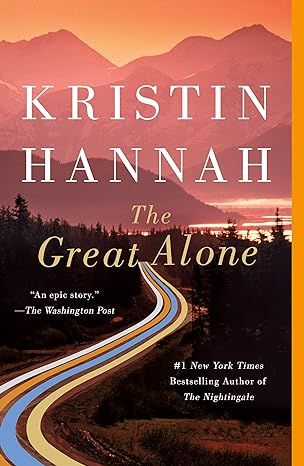
The Great Alone: A Novel
4.6
-
152,447
$5.49
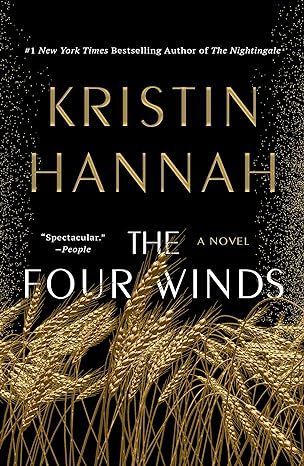
The Four Winds
4.6
-
156,242
$9.99
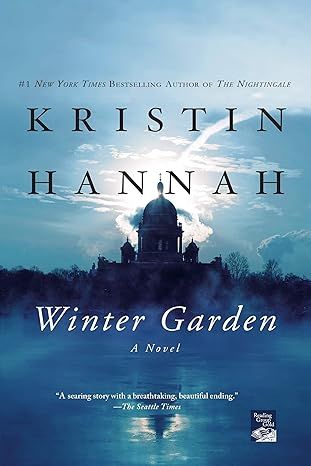
Winter Garden
4.6
-
72,838
$7.37
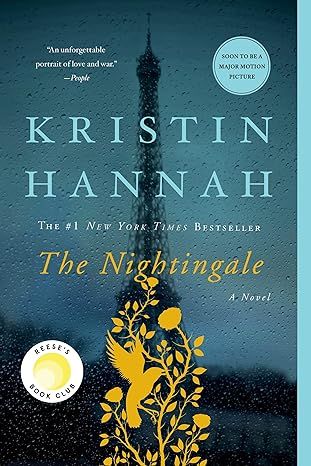
The Nightingale: A Novel
4.7
-
309,637
$8.61
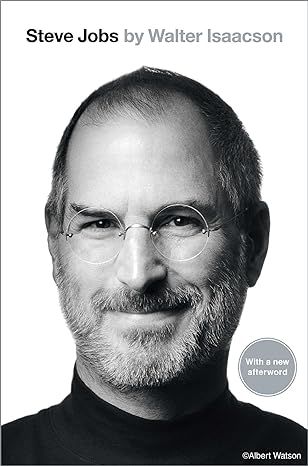
Steve Jobs
4.7
-
24,596
$1.78
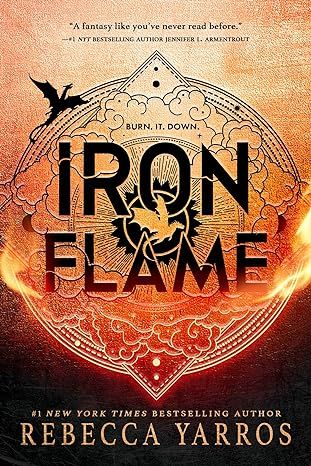
Iron Flame (The Empyrean, 2)
4.6
-
164,732
$14.99
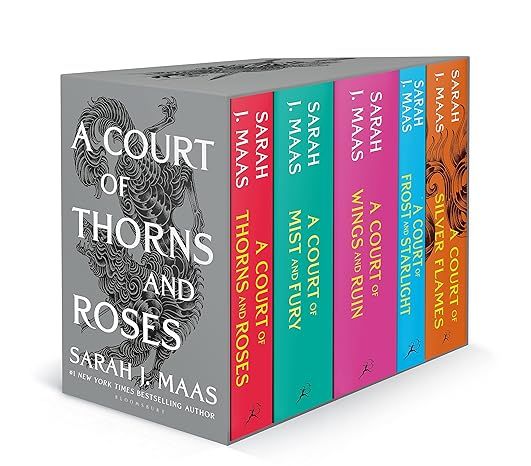
A Court of Thorns and Roses Paperback Box Set (5 books) (A Court of Thorns and Roses, 9)
4.8
-
26,559
$37.99
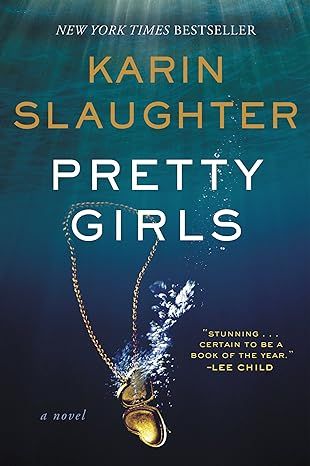
Pretty Girls: A Novel
4.3
-
88,539
$3.67
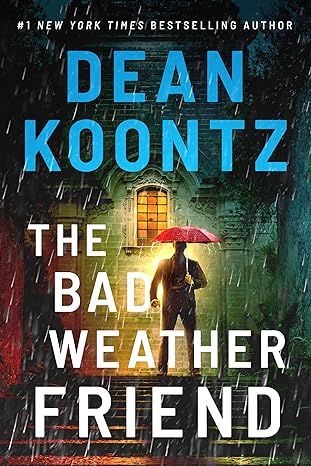
The Bad Weather Friend
4.1
-
34,750
$12.78
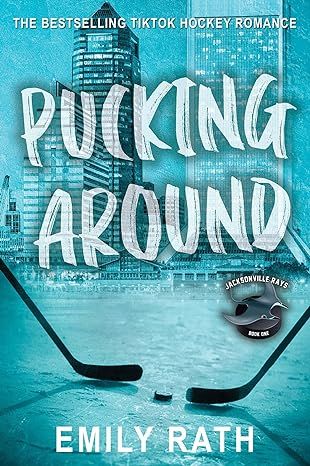
Pucking Around: A Why Choose Hockey Romance (Jacksonville Rays Hockey)
4.3
-
41,599
$14.84
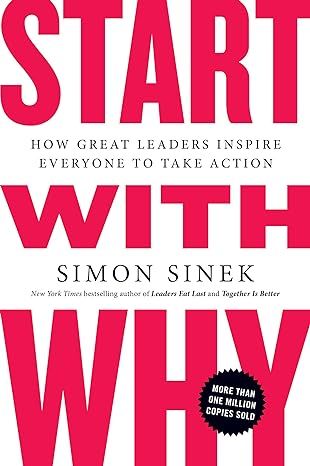
Start with Why: How Great Leaders Inspire Everyone to Take Action
4.6
-
37,152
$9.99
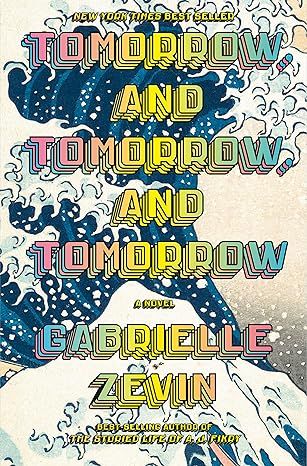
Tomorrow, and Tomorrow, and Tomorrow: A novel
4.4
-
95,875
$13.99
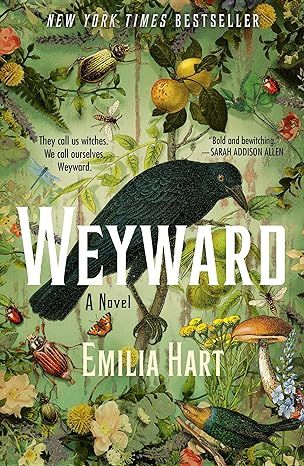
Weyward: A Novel
4.4
-
27,652
$11.99
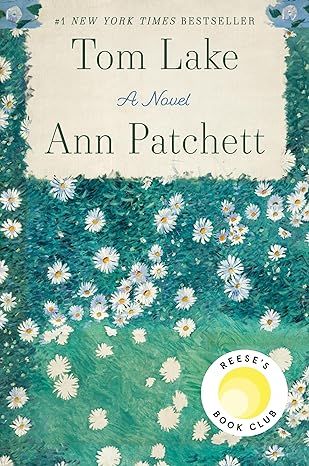
Tom Lake: A Reese's Book Club Pick
4.3
-
37,302
$15.74
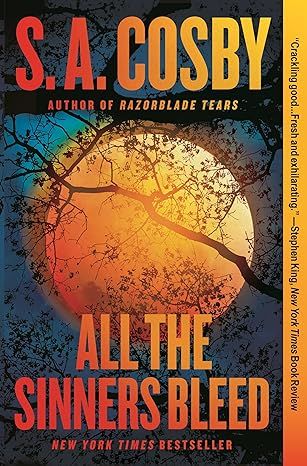
All the Sinners Bleed: A Novel
4.4
-
12,894
$13.55
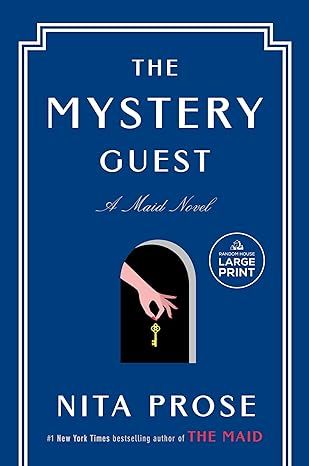
The Mystery Guest: A Maid Novel (Molly the Maid)
4.3
-
9,844
$14.99
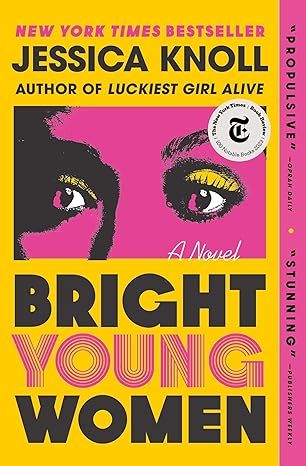
Bright Young Women: A Novel
4.2
-
8,485
$14.99
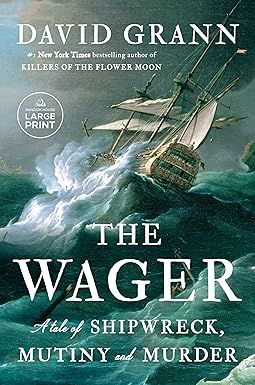
The Wager: A Tale of Shipwreck, Mutiny and Murder (Random House Large Print)
4.5
-
28,672
$14.99
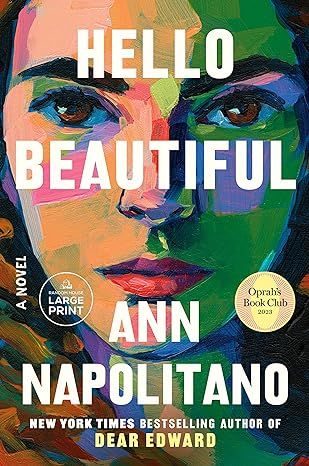
Hello Beautiful (Oprah's Book Club): A Novel (Random House Large Print)
4.4
-
79,390
$14.99
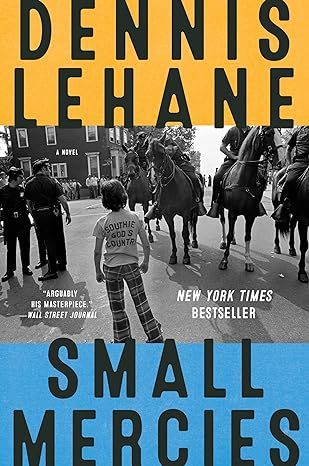
Small Mercies: A Detective Mystery
4.5
-
16,923
$10.00
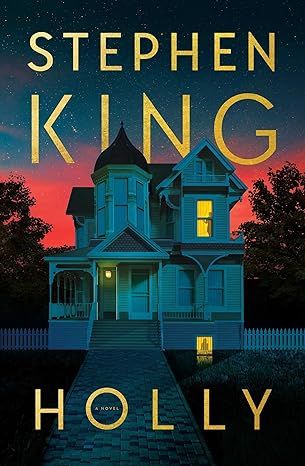
Holly
4.5
-
31,521
$14.99
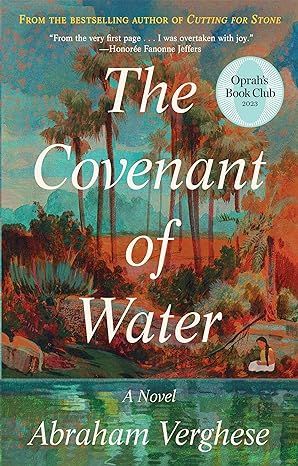
The Covenant of Water (Oprah's Book Club)
4.6
-
69,712
$9.24
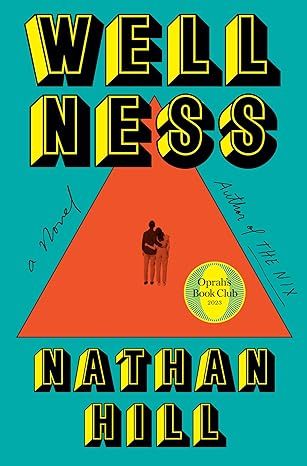
Wellness: A novel
4.1
-
3,708
$14.99
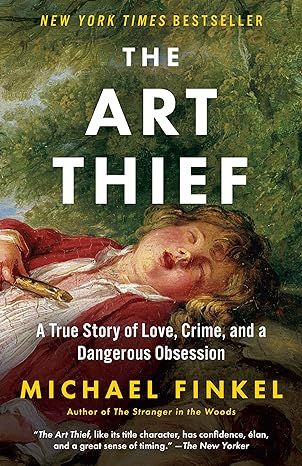
The Art Thief: A True Story of Love, Crime, and a Dangerous Obsession
4.3
-
4,805
$14.99

The Berry Pickers: A Novel
4.5
-
14,209
$14.99
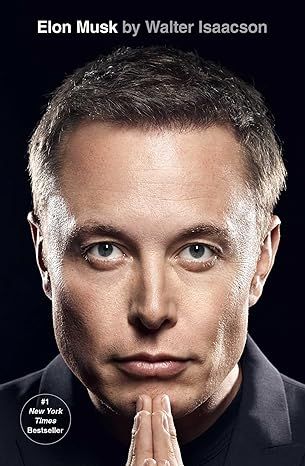
Elon Musk
4.7
-
15,272
$16.99
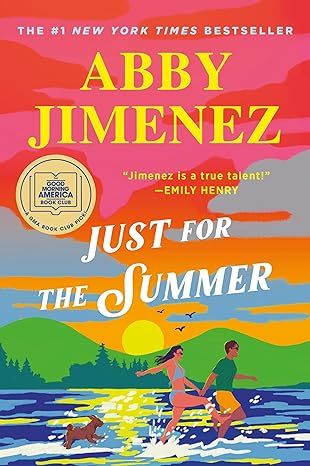
Just for the Summer
4.6
-
19,524
$11.99
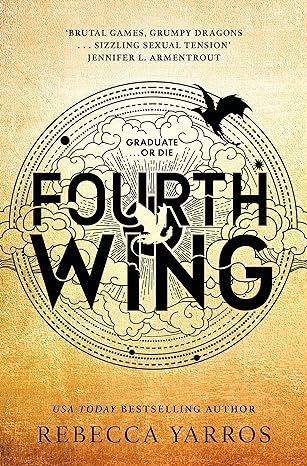
Fourth Wing (International Edition)
4.8
-
206,495
$7.95
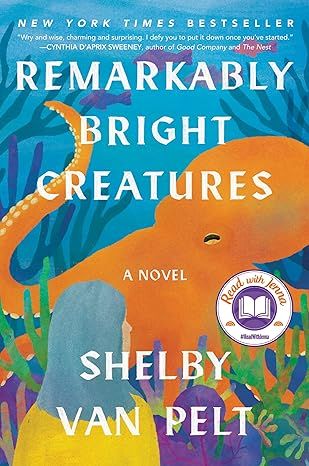
Remarkably Bright Creatures: A Read with Jenna Pick
4.6
-
65,556
$15.80
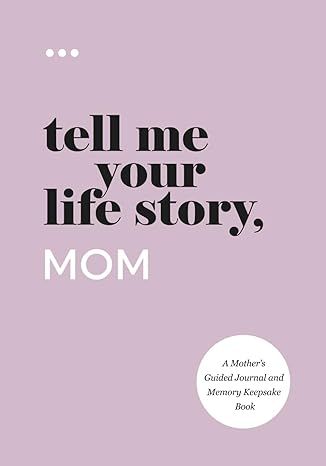
Tell Me Your Life Story, Mom: A Mother’s Guided Journal and Memory Keepsake Book (Tell Me Your Life Story® Series Books)
4.7
-
5,107
$11.24
